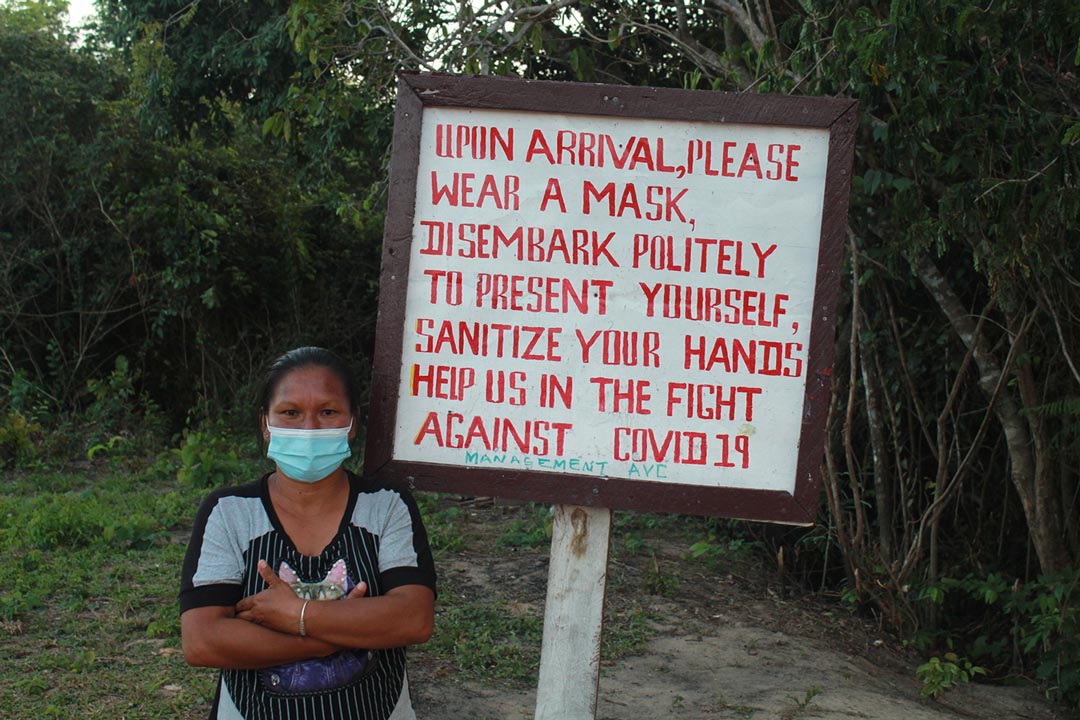Covering COVID-19 in Guyana’s ‘Deep South’
The indigenous people adopted measures that were more applicable to the challenges but also their reality. And I tried to illustrate that in my story.
- 11 May 2021
- 4 min read
- by Immunization Advocates

Though the majority of Guyana’s population is concentrated on the country’s low coastal plain, which hugs the Atlantic Coast, there are significant pockets of people living across the country. Indigenous communities, in particular, are found in hinterland regions where there are significant resource disparities.
I began focusing my reporting extensively on COVID-19 in October 2020, after I was finally able to secure a repatriation flight. It was not long before colleagues at the Guyana Chronicle, the state-owned newspaper I frequently write for, dubbed me the “COVID Reporter” because of my dedication to all things COVID. Cognizant of this dedication, a friend encouraged me to apply for the “Reporting on Immunization” training opportunity from the Thomson Reuters Foundation. I knew Guyana would soon enter the second phase of the pandemic, the COVID-19 vaccination rollout, and that meant that I needed to have a good grasp of what I would be reporting on.
During that training, I was mentally relating everything to Guyana. Sure, the development of vaccines was certainly important, but it was the nuances that emerged that got me thinking. While learning about the cold-chain requirements for the transportation necessary for some of the COVID-19 vaccines, I realized that transporting these supplies across Guyana, but especially into hinterland communities, would be a challenge. When we addressed the need for credible, trustworthy information, I thought about the limited exposure some communities had to credible sources such as the World Health Organization (WHO). These were major considerations, for me, during the training and these led me towards crafting my successful story pitch.
I knew that it was important to understand and highlight how vulnerable groups, like indigenous people, had been contending with the disproportionate impact of COVID-19. I also recognized that because of their location in the rural and hinterland regions, a carefully planned vaccination rollout was necessary to circumvent the logistical challenges presented. With those two considerations in mind, the Chronicle facilitated my to travel to Region Nine (Upper Takutu-Upper Essequibo), the southernmost region of Guyana. I also chose this region, in part, due to its proximity to Brazil and the porous border the two countries shared.

Photo courtesy Vishani Ragobeer.
Though the indigenous communities faced a dearth of resources and information, and a porous border with a country that is severely impacted by COVID-19, they defined resilience. The local leaders and grassroots bodies collaborated to institute measures independent of the national guidelines including checkpoints and monitors to filter illegal crossings and curating their COVID-19 messages in the Wapichan language. The vaccination rollout for the general population has not commenced yet, but they were keen on similarly educating community members about the vaccines.
Have you read?
While there, I recognized how important it is for journalists like myself to decolonize our journalism and engage indigenous people with respect, cultural sensitivity and a keen focus on equity. The indigenous people adopted measures that were more applicable to the challenges but also their reality. And I tried to illustrate that in my story.
Following the publication of my article, it was reported that Region Nine was the first region to vaccinate all of its frontline health workers. To date, it remains the only region that has achieved universal coverage of its health workers. Additionally, the National COVID-19 Task Force (NCTF) upped its border patrols in a bid to dissuade illegal crossings between Guyana and Brazil. Two weeks ago, unfortunately, there were reported COVID-19 infections in Aishalton (one of the Region Nine communities I visited), which claimed the life of one village elder. The community is currently in a complete lockdown, hoping to recover swiftly.
It just goes to show that the battle against COVID-19 is far from over and that we ought to keep adhering to public health measures.
Author

Vishani Ragobeer
Vishani Ragobeer is a 21-year-old Guyanese freelance journalist, who has a keen focus on science and health journalism. In 2019, the Guyana Press Association (GPA) recognized Vishani as the Young Journalist of the Year (2019). Currently, Vishani is also pursuing studies in leadership and management at the University of the West Indies (UWI), St. Augustine campus.
Website
This article was originally published by Immunization Advocates on 26 April 2021.
More from Immunization Advocates
Recommended for you





